After spending the summer living in my perfect summer skirt, I decided that it was time to tackle a go-to pattern for a fitted a-line skirt with a zipper closure. Because, elastic waistbands are great and all, but some fabrics and occasions call for a cleaner silhouette and a bit more structure. So, not happy with any of the patterns that I’d tried, I decided to draft a simple a-line skirt pattern that I could use as my winter uniform, and I was determined to get the fit just right. And, while I was working on my skirt, I put together this 5-step fitting guide to help you sew the fabulous a-line skirt of your dreams too! So, grab an a-line skirt pattern in your size—or draft your own, if you’re so inclined—and let’s make some fit magic happen!
Note: This is by no means a comprehensive skirt fitting guide, but these 5 simple tips can help you give your a-line skirts a more flattering fit with minimal futzing.
Fit Tip 1: Move the darts.
In skirts, darts add shape, curve, and dimension to an otherwise flat fabric surface, making room for hips, thighs, bellies, and backsides. But, if the pattern you’re using wasn’t originally designed for your body shape, chances are pretty good that the darts aren’t placed in the most flattering position for you. This is especially the case if you fall into any of these categories: You’re petite, you’re extra-curvy, you have a round butt or a flat butt, you have wider or narrower hips, or you have a hip-to-waist ratio that requires the blending of two different pattern sizes. (So, that probably covers most of us.) Luckily, it’s easy to move darts around a little to get a better fit, and they totally don’t mind if you do!
The most helpful explanation of the positioning of darts that I’ve ever received seems obvious now that I think about it, but, at the time, it was truly a revelation: The point of the dart should point towards the fullest part of a rounded curve on your body. Translation: Each dart on the back of my skirt should be positioned above and point directly towards the center of one of my ample butt cheeks. (Of course, if you don’t have a similarly shaped posterior, you can always replace “butt cheeks” with hips and/or the most appropriate noun for your body.) The dart should end just above the fullest part of the rounded area. (Because, if the dart extends below the part of my butt that sticks out the most, that kind of defeats the point or creating space for it, right?)
So, if you’ve sewn a muslin that fits in the waist and through the hips but still looks a bit wonky—like it’s pulling across some areas or is baggy in others—take a look at the darts. Are they pointing towards the fullest parts of your body in both the front and in the back? If not, to achieve a more flattering fit, move the darts in towards the center or out towards the sides as needed until the points are in the proper places. (Make sure you don’t change the width of the darts when you’re moving them—that will change the size of the waistband.) Once you’ve found the right dart position, mark the change on your pattern.
Note: There are also ways to angle the darts to adjust fit, but I’m not going to cover that in detail here. The general concept is the same as the one described above, and adjusting the angle of the darts—or even adding additional darts—can yield a more flattering fit for some body shapes.
Fit Tip 2: Shorten or lengthen the darts.
Like I mentioned in the first tip, darts should end just above the fullest part of the rounded curve on your body. If the darts in your muslin end way before the fullest part of the curve or extend way beyond it, you can shorten them or lengthen them as needed. (Again, make sure you don’t change the width of the darts when you’re changing the length.)
Don’t be shy about changing the dart length—I’m short-waisted and my butt sits high, so I always end up shortening mine at least an inch or so.
Fit Tip 3: Skip the front darts.
Front darts can create a flattering shape, especially if you’ve got curves at your lower belly or hips, but they can be downright unflattering if you don’t. If you’re having trouble fitting your front darts and you’re not sure if they really flatter your shape, try removing the front darts completely. If that fixes the fit, change your pattern to remove the extra fabric width (the width of each dart) at the side seams.
I have a reasonably flat stomach and hips that aren’t much wider than my waist (read: no hourglass shape), so I always end up removing the front darts on my a-line skirts. If I don’t, I just end up with an awkward bunching of fabric at the lower belly. On the other hand, my best friend, who has more of an hourglass shape, looks great with some shaping from front darts.
Fit Tip 4: Ignore the dart positions marked on the pattern and pin them instead.
This method is probably the quickest and most surefire way to get perfect darts, but it requires either help from a willing friend who can be trusted not to stick you with pins or a good dress form that matches your measurements.
Instead of sewing the darts on your muslin as marked in the pattern, adjust and pin the darts by hand, changing the dart position and length evenly on each side until the fit is most flattering. Once you’re pleased with the results, mark the position of your custom darts on the pattern, then check the final waist measurement and make any necessary changes to the length of facings or waistbands as needed.
Tip: Use a fabric pen to mark your custom dart positions on your muslin, then re-open the dart and transfer the marks to your pattern.
Fit Tip 5: Increase the angle or use slash-and-spread fitting.
Increase the angle (the cheater way):
If the waist of your skirt fits but you need tiny bit more room in the hips, you can add additional ease to an a-line skirt by increasing the angle where the side seams meet the waist of the skirt. (A.k.a: Making the bottom of the skirt wider.) Make this change to the side seams of both the front and back patterns.
Let’s be clear: this is a quick-and-dirty solution that you can probably get away with for SMALL changes. But, like many quick-and-dirty solutions, it isn’t the *right* way to do it. If you’re making bigger changes, use the method below.
UPDATE: Slash-and-spread (the correct way):
Because a-line skirts have straight side seams, you can fudge the fit by giving yourself a little bit of extra room at the side seams, but any substantial changes to your pattern should be made using the slash-and-spread method illustrated above. It’s a little more work than just adding a bit of width at the bottom, but it’s still pretty darn easy: On the pattern for the front of the skirt, cut a vertical line from the bottom of the dart to the bottom of the skirt on both sides, then spread the side pieces wider until you achieve the desired fit. Do the same for the back of the skirt. To finish, straighten out the side seams.
Wait. Doesn’t that give me the exact same results as the increase the angle method? Almost. The slash-and-spread method maintains the correct curve in the bottom of the skirt, ensuring that it will hang straight when worn. The increase the angle method doesn’t. When you’re making really small changes, this isn’t very noticeable, but it can make a huge difference when the changes are bigger.
** Special thanks to my pal Sonya Philip, who [correctly] inspired me to add the slash-and-spread method after the post went live this morning. Whether she intended to or not, she provided a gentle and much-appreciated reminder that if I’m going to explain something, I should explain it all the way. (Thank you, Sonya!)
Heck yes, sewing-related geometry!

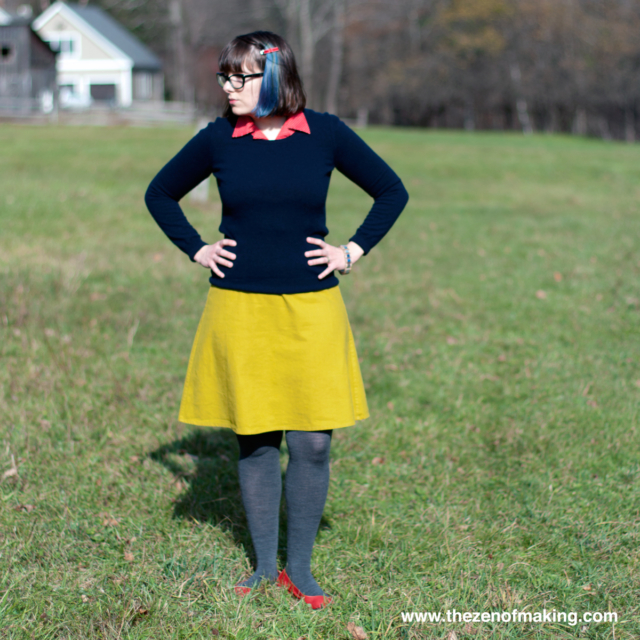
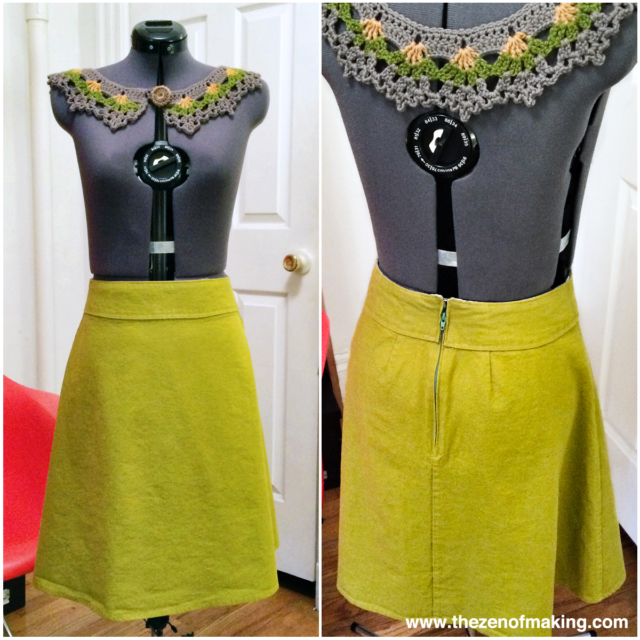
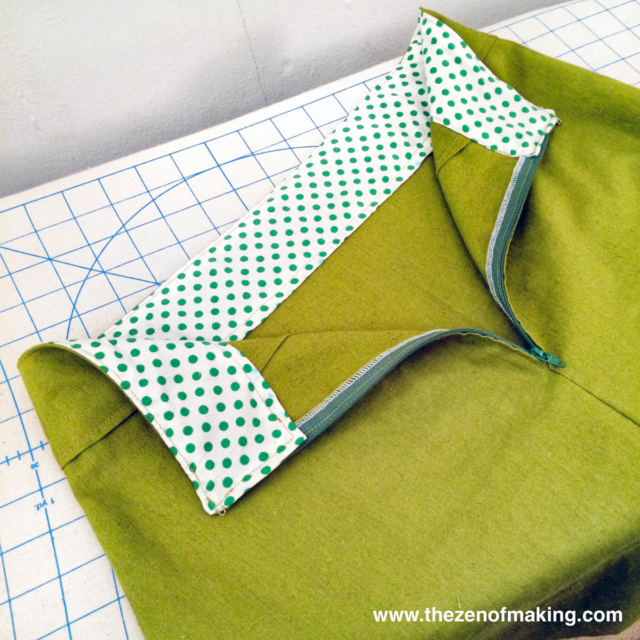
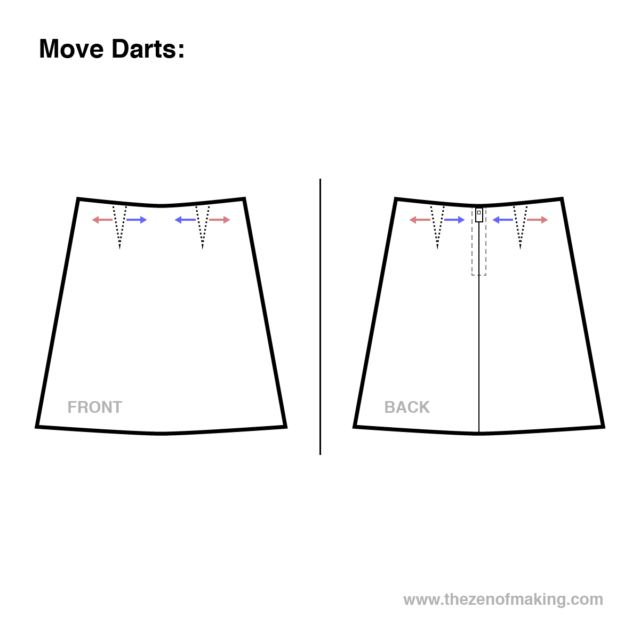
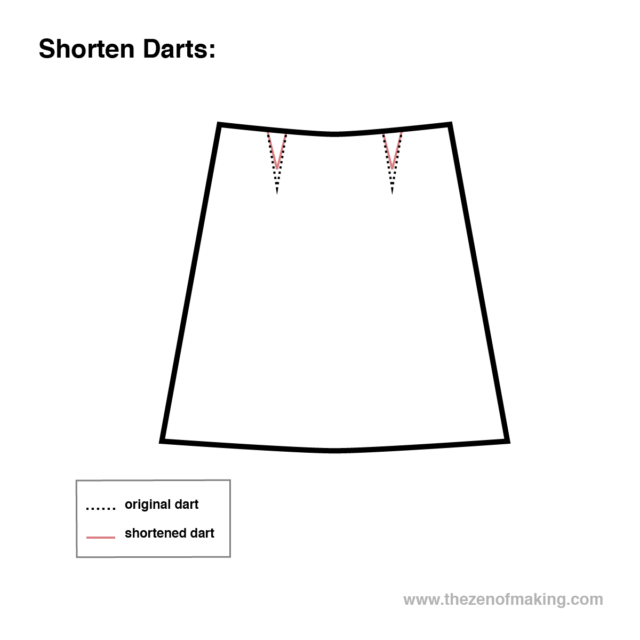
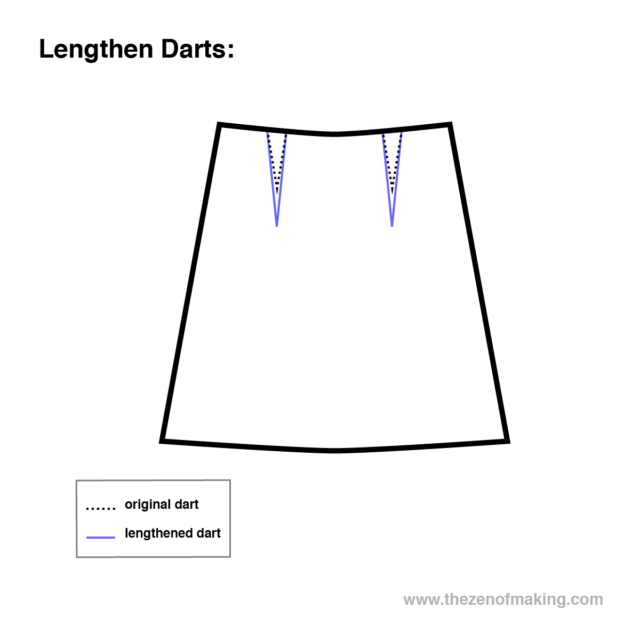
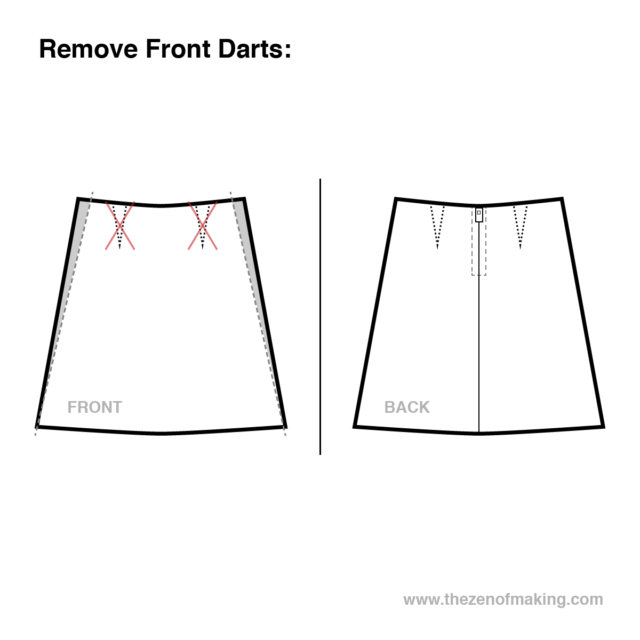
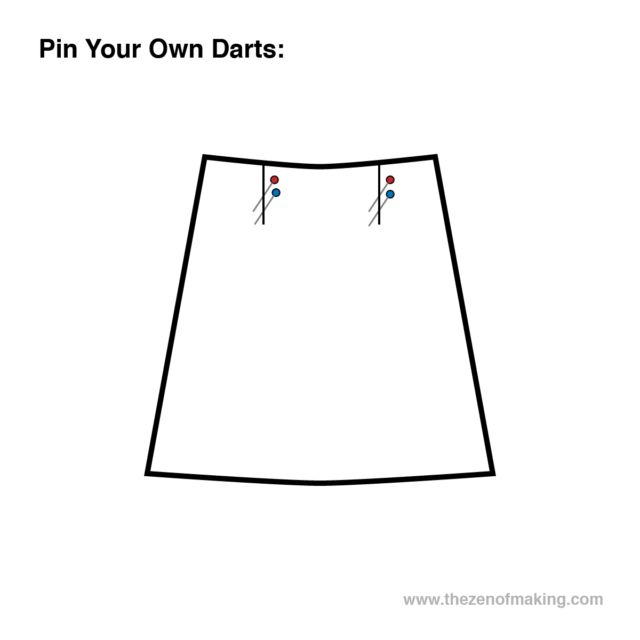
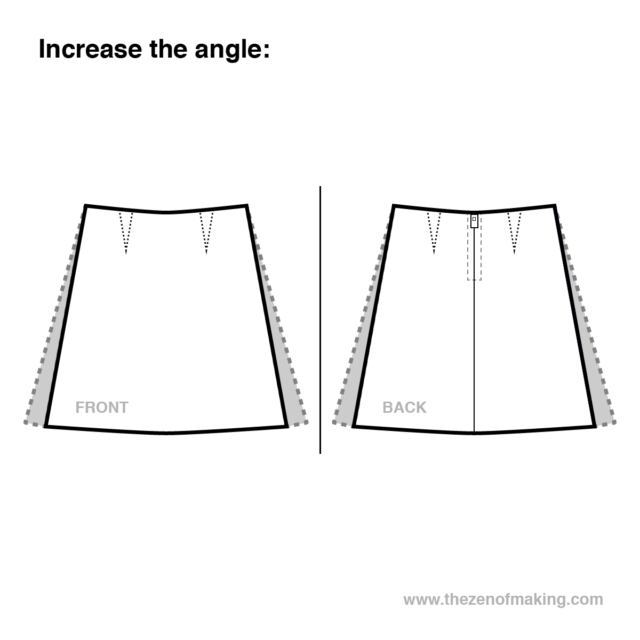
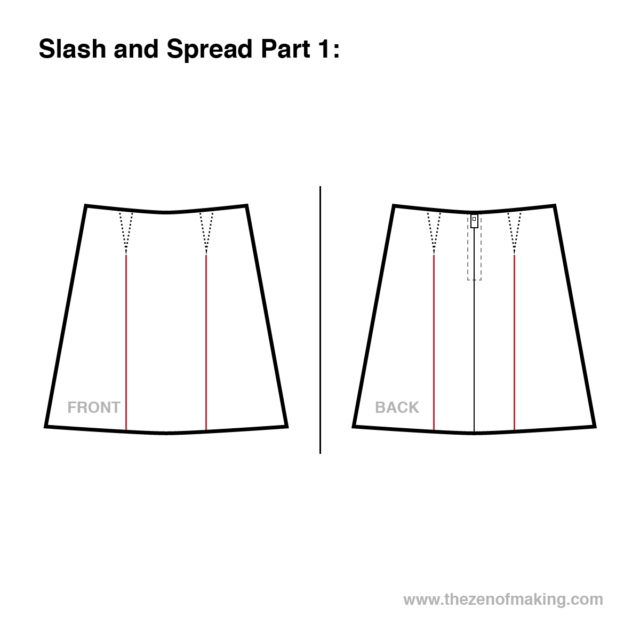
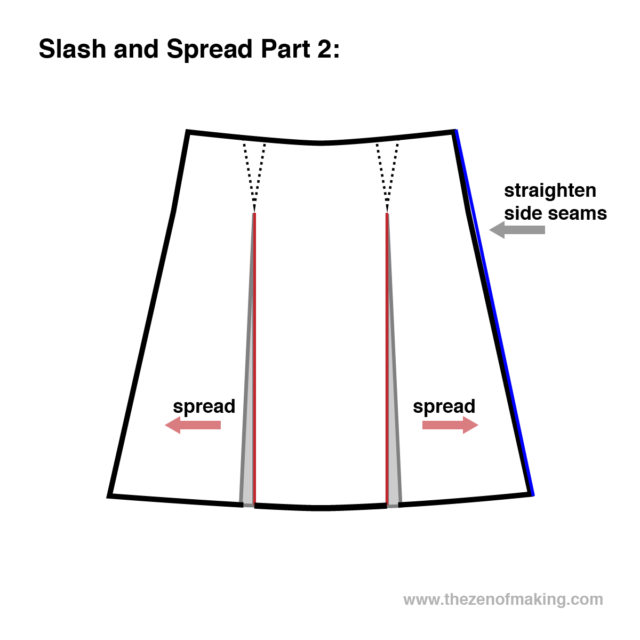
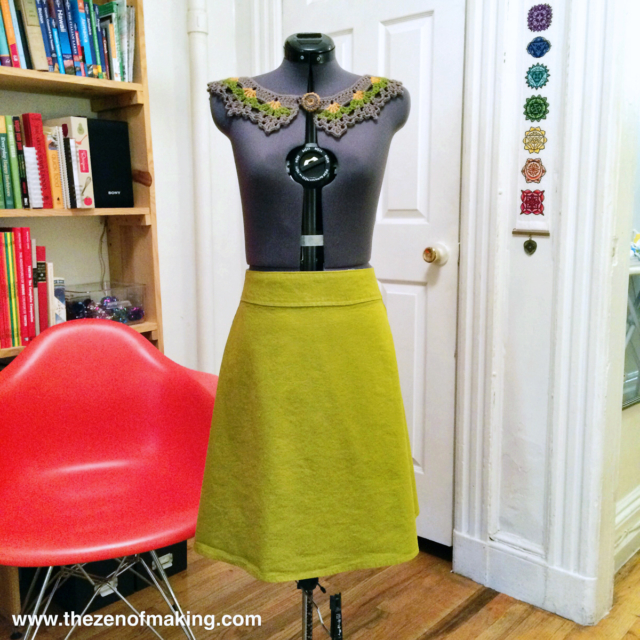
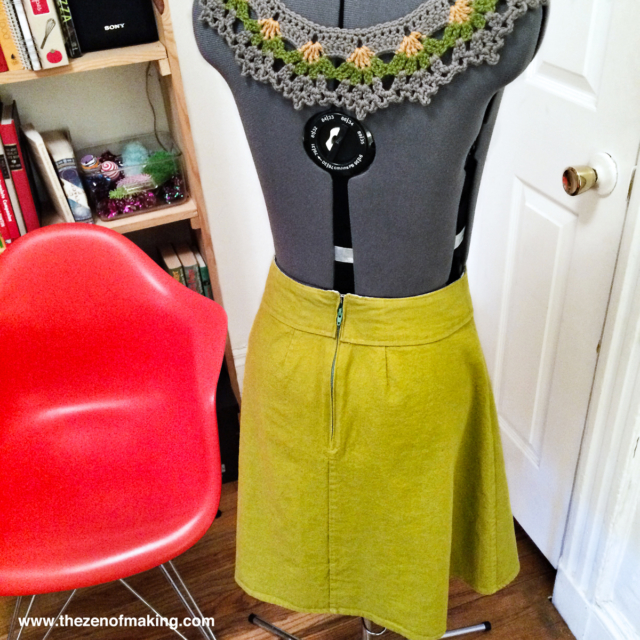
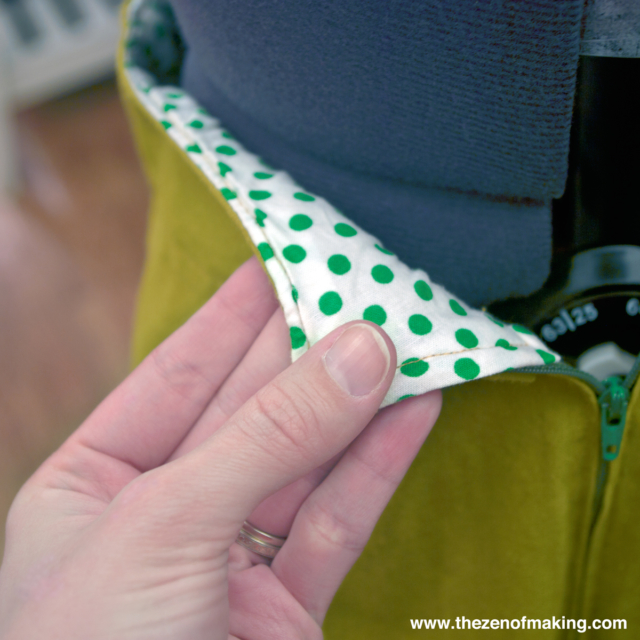
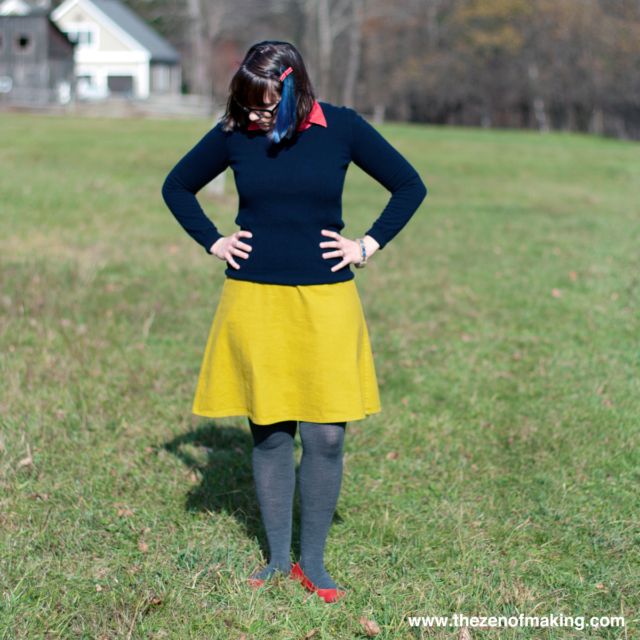

Great instructions. What pattern did you eventually use?
Thanks! Since a-line skirts are pretty simple, I drafted my own pattern. :)
Thank you soo much! I am petite, almost flat stomach with a tiny behind and very little difference in waist hip measurement – read classic athletic built, which honestly I like. Everyone keeps saying I complain unnecessarily coz I have a good body shape…… But they DO NOT make clothes for my built!!!! The market world wide makes clothes for the lovely hour glass figures. Either that or you have to spend a fortune to get one of those skirts. I am not seamstress but have resorted to sewing my own clothes. Your post is awesome and in hindsight seems like an obvious solution…… NO DARTS IN THE FRONT…yay! More skirts for me now. Thanks a ton for ur super easy to understand post.
Thanks for such a thorough explanation. I’m a timid newbie (at 53 years old) and this was fabulous!
If you need, say, total 1 inch in hip area, moving just side seam from waist, does that qualify as a small change in your cheater method, or am I better off with the slash method?